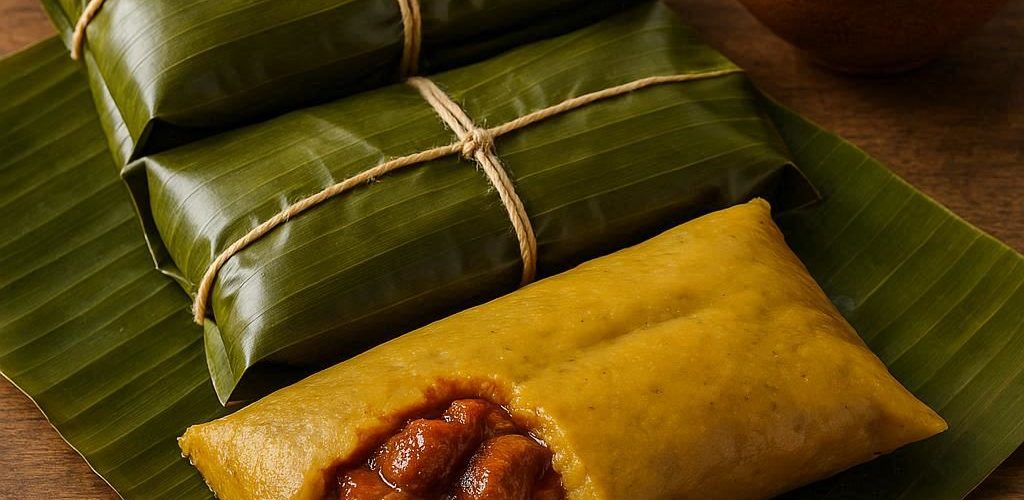When it comes to the rich tapestry of Caribbean cuisine, few dishes embody cultural heritage and communal warmth like pasteles. These delectable treats, often enjoyed during festive gatherings and special occasions, are a testament to the culinary artistry that thrives in Puerto Rican kitchens. Imagine tender morsels of pork simmered in a savory adobo sauce, encased in a vibrant green plantain masa, all lovingly wrapped in banana leaves. Let’s take a closer look at the making and significance of this beloved dish.
At the heart of every pastel lies its filling—juicy pork marinated in a robust adobo sauce. The adobo, a traditional Puerto Rican seasoning blend, typically incorporates garlic, oregano, cumin, and a hint of vinegar for tanginess. This blend not only infuses the pork with flavor but also ensures that each bite is succulent and satisfying. The marinated pork is then slow-cooked until it reaches the perfect tenderness, allowing the flavors to meld beautifully.
Next comes the masa, which is made from green plantains, a staple in many Caribbean diets. The green plantains are peeled, boiled until soft, and then mashed until smooth. This creates a versatile base that serves as the signature outer layer of the pastel. The bright green hue not only adds visual appeal but also contributes a subtle sweetness that balances the savory filling perfectly.
Once the masa is ready, it’s time for the assembly. A portion of the green plantain masa is spread out on a square of banana leaf, followed by a generous scoop of the adobo pork filling. The banana leaves not only act as a protective wrap during cooking but also impart a light, aromatic essence to the pasteles that is simply unmatched. Finally, the banana leaves are folded and tied securely, ready to be cooked.
Cooking pasteles is a labor of love. Traditionally, they are boiled or steamed, allowing the masa to set and the flavors to intensify. This process can take up to an hour, but the aroma that fills the kitchen is more than worth the wait. As they cook, the pastele’s exterior transforms into a tender, yet firm shell, encasing the rich and tangy pork inside.
Pasteles hold a special place in Puerto Rican culture, often being prepared for festive occasions like Christmas and family gatherings. The dish is typically served with a side of arroz con gandules (rice with pigeon peas) and a crisp salad, creating a vibrant and festive meal. The act of making pasteles can also be a social affair, bringing family members together to share stories and bonds while preparing the delicious treat.
For anyone looking to explore the flavors of Puerto Rican cuisine, pasteles are a must-try. They encapsulate a sense of tradition, warmth, and celebration that resonates through each bite. Whether enjoyed at a holiday feast or a casual get-together, pasteles are not just food; they’re a connection to heritage and a reminder of the importance of community in every delicious layer. So gather your loved ones, roll up your sleeves, and dive into the wonderful world of pasteles—you won’t be disappointed!




Add comment